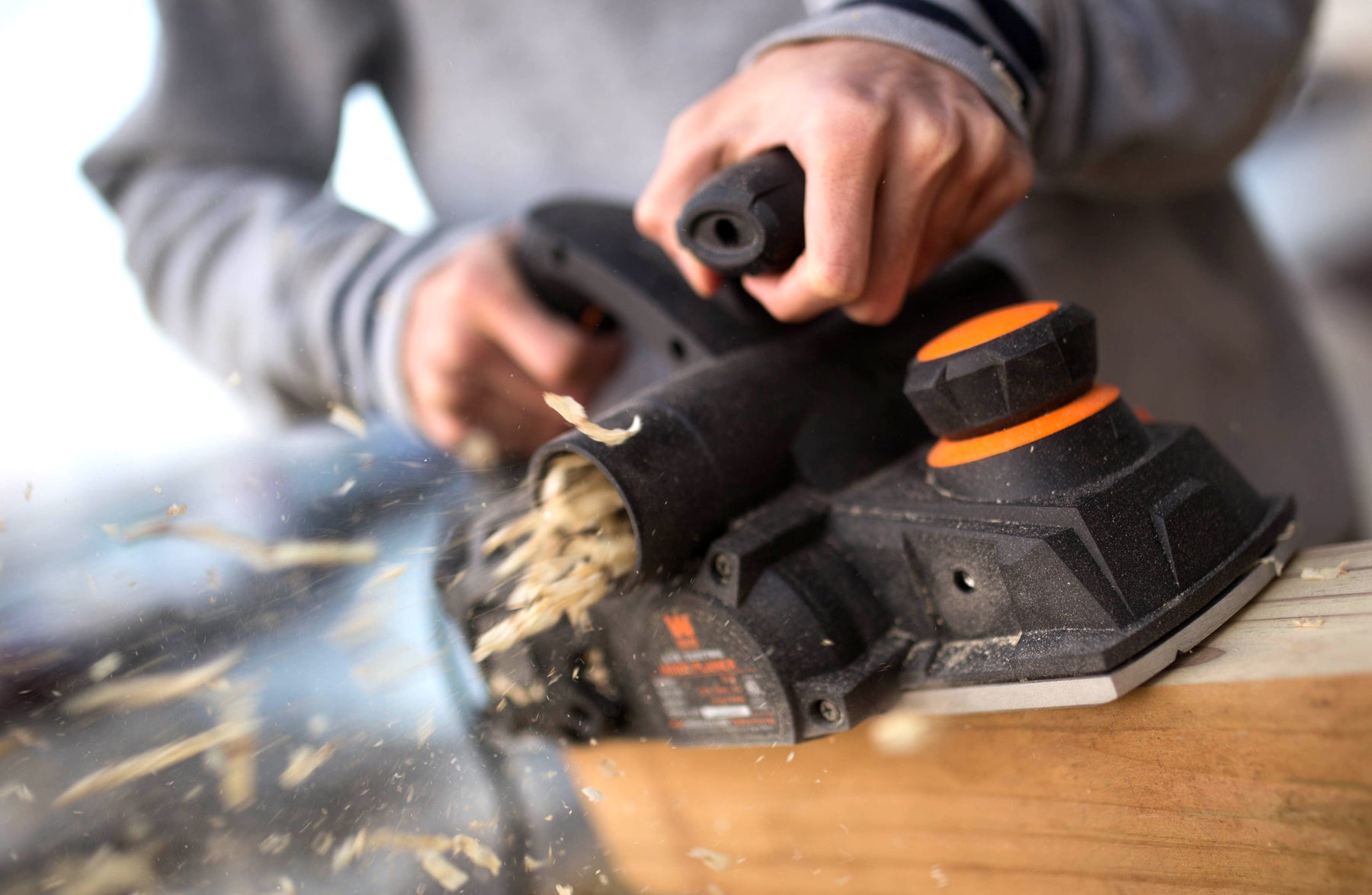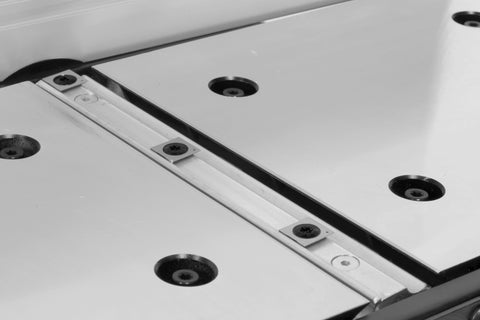Shop Here
Shop Here

Whether you're beginning your woodworking journey or have been making sawdust for years, if you're looking to take things to the next level, few tools are as indispensable as planers and jointers. At first blush, they seem similar, but they're used for different purposes. In this post, we'll discuss the differences and similarities between planers and jointers, their uses, and how to choose the tool that's right for you.
When we're talking about planers, we need to be specific with what we're talking about. There are two general categories of planers: hand planers and thickness planers (often called "thicknessers" in Europe).
Hand planers can be further broken down into two types: manual hand planes and powered hand planers.
Often just called "planes", there are several different types of hand planes - jack planes, block planes, scrub planes, and more. We won't get into too much detail here about their differences, similarities, and specific uses, but they're the tool you may have seen your grandfather using. They consist of a block of wood or metal with forward and rear grips, as well as a large, very sharp blade mounted in the middle of the plane at an angle. The operator pushes the plane over the wood to remove material, smooth out rough sections, create chamfered edges, and more. Hand planes are often the tool of choice for fine woodworkers given their incredible versatility, durability, and amount of control offered, and are the least expensive of the several categories mentioned here.
Sometimes referred to as "power planers", these are basically electric versions of the traditional hand plane. Instead of having a single sharp blade mounted at an angle, they use a motor to turn a rotating cutterhead, which often features multiple blades, at very high speeds. They're capable of removing material very quickly, making them perfect for trimming down doors, creating rabbet joints, and flattening out rough or dimensional lumber. Both corded and cordless versions are available.

The WEN 20653 20V cordless brushless planer is both portable and powerful, and is part of the WEN 20V Max lithium-ion cordless power tool system.
Powered hand planers are the second-least expensive category.
Thickness planers work similarly to a powered hand planer, but instead of an operator pushing the planer over the workpiece, the workpiece is fed into the planer on a long, flat bed. Above the bed is a series of rollers that pull the workpiece into the planer and through the cutterhead, which rotates at high speeds.

The WEN PL1252 12.5" thickness planer in action.
Thickness planers are best used for taking rough stock and cutting it down to a particular thickness over the course of several passes. Some thickness planers, such as the WEN PL1303 and PL1326 13-inch thickness planers, feature onboard depth stops to easily finish wood to preset thicknesses. Planers are available in benchtop or free-standing configurations.
A planer is great for getting a piece of wood to a uniform thickness with two parallel faces, but it will not fix a warped, bowed, or cupped board. If you put a crooked board into a thickness planer, it will come out crooked. To fix it, you may need a jointer.
As mentioned, a jointer is a machine that's designed to fix up warped boards and get them square, flat, and ready for joining with other boards, or for further processing on a thickness planer or table saw. To do this, a jointer makes use of two long, flat tables on either side of a rotating cutterhead, as well as a large fence. The infeed table is set slightly lower than the outfeed table and the blades, which are level with each other. When the operator sets the board on the fence and infeed table and pushes it across the cutterhead, the blades cut the board down so that it is perfectly flat and flush with the outfeed table.

Jointers are available in benchtop and floor-standing configurations.
These are usually floor-standing machines (though benchtop models do exist) that combine a planer and jointer into one machine, using the same cutterhead for each function. The jointer section sits atop the planer section. They're good options for saving space in the shop, but if you're in a shop or have multiple people needing to use the planer and jointer simultaneously, it's a good idea to go with separate machines. Combination machines often cost roughly the same amount as buying both machines separately, but are more compact.
The first thing you'll need to figure out is what you'll use your new tool for. Are you making fine furniture by hand, or just looking for an inexpensive hand tool for miscellaneous tasks around the house? Go for a hand plane. If you're making surfboards, trimming doors, or remodeling the rough joists in your basement, a powered hand planer will be your new best friend. Finally building that bookcase you promised your wife you'd get around to last year? A thickness planer or jointer will be the way to go.
If you have to pick between either a planer or jointer because of budgetary or space constraints, you may want to go with a thickness planer first. Why? A few reasons:
Once you know what you need, consider the following factors.

The WEN JT833H 8-inch benchtop jointer uses 16 cutting inserts arranged in a spiral around the cutterhead for a low-snipe, high-precision finish.
Thanks for reading! If you have any questions about your WEN planer or jointer, or just need help deciding which machine is right for you, please feel free to give us a call at 1-847-429-9263 (M – F, 8 – 5 CST), or drop us a message here to talk to our friendly and knowledgeable technical support team.
Leave a comment